Laidback Living on an Australian Rocket-Testing Range
The Woomera complex is the world’s largest military land base. Perfect place for a cattle ranch.
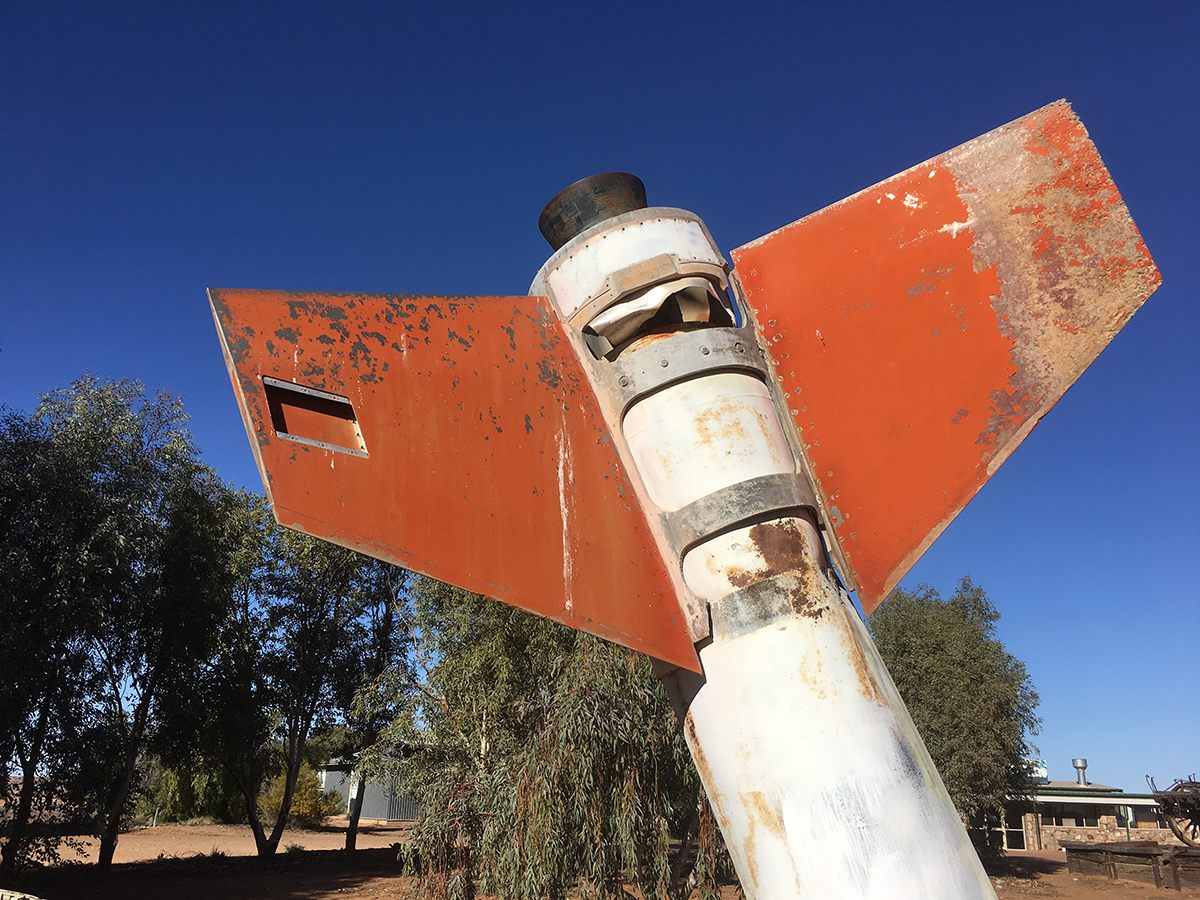
If you walk around the homestead at The Twins cattle ranch in outback Australia, it’s hard not to think the people who live there might be a little odd. First, an old bomb shelter gives the impression someone was overly concerned about a Soviet nuclear attack, even though the 4,500-acre property is in one of the least populated areas on earth. Then there are the heads and tails of exploded rockets decorating the garden and lined up against the side of the house.
But Wayne Rankin, who runs the ranch, isn’t odd at all. His property is just on the Woomera Range Complex in South Australia where the British, U.S. and Australian militaries have tested all things that go boom for decades.
The bomb shelter was built for the family by the Australian government in the early 1960s. The Rankin family collection of wayward rockets that landed on the cattle station is evidence that this was not an overreaction.
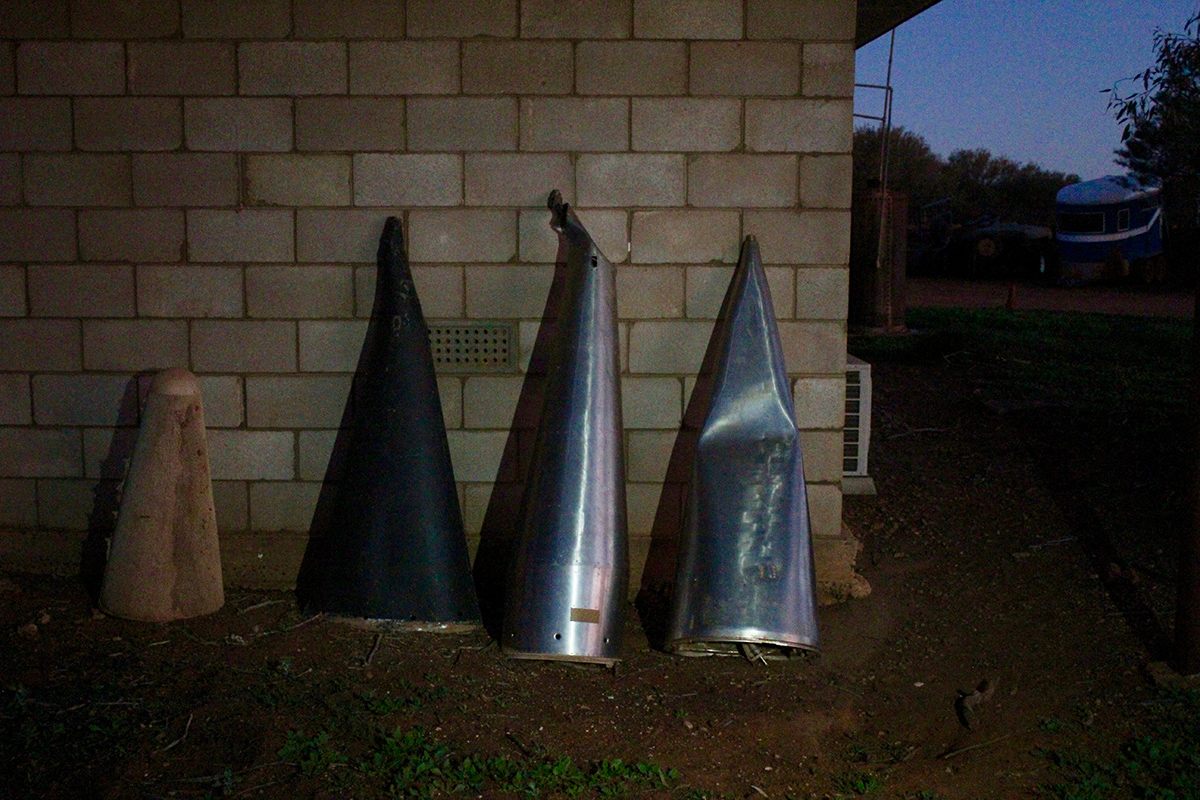
“I remember as a child when Woomera fired rockets off in the early days, they used to have colored grenades in them,” says Rankin, 66, who grew up on the ranch, which is referred to as a cattle station in Australia. “I used to see a lot of different colors as the rockets went up.”
The Woomera Range Complex is considered the world’s largest military land base. At close to 50,000 square miles, it is about the size of Louisiana. However, much of that arid and flat land is leased to mining companies or pastoralists to run either cattle or sheep. That is why people like the Rankins technically live on the rocket range.
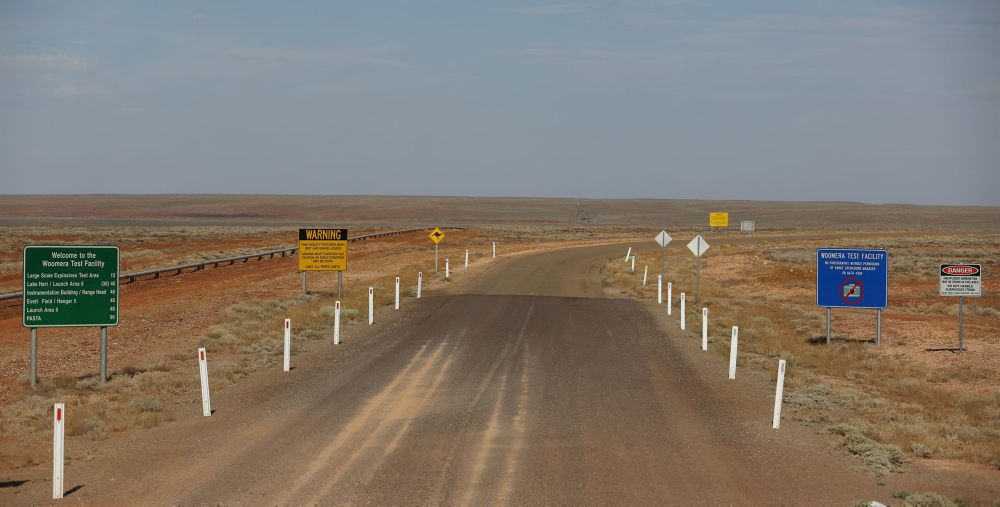
“It has been a good part of our lives, and it never did us any harm,” says Rankin. In the 1960s, when testing seemed to be at its peak, the family would get numerous phone calls from the military notifying them of an impending test. The first warning call would come a week out, then another one the day of and then another 20 minutes out, notifying the family to enter the bomb shelter. Often a plane would fly over the cattle and sheep stations to ensure people were out of the way.
“Sometimes, there might be a test at two in the morning, and we would have to straggle over to the bomb shelter,” says Rankin. As the rocket tests became part of their way of life, many pastoralists set up deck chairs on top of the bomb shelters to watch the light show instead of going in them. “We were all guilty of that,” Rankin says.
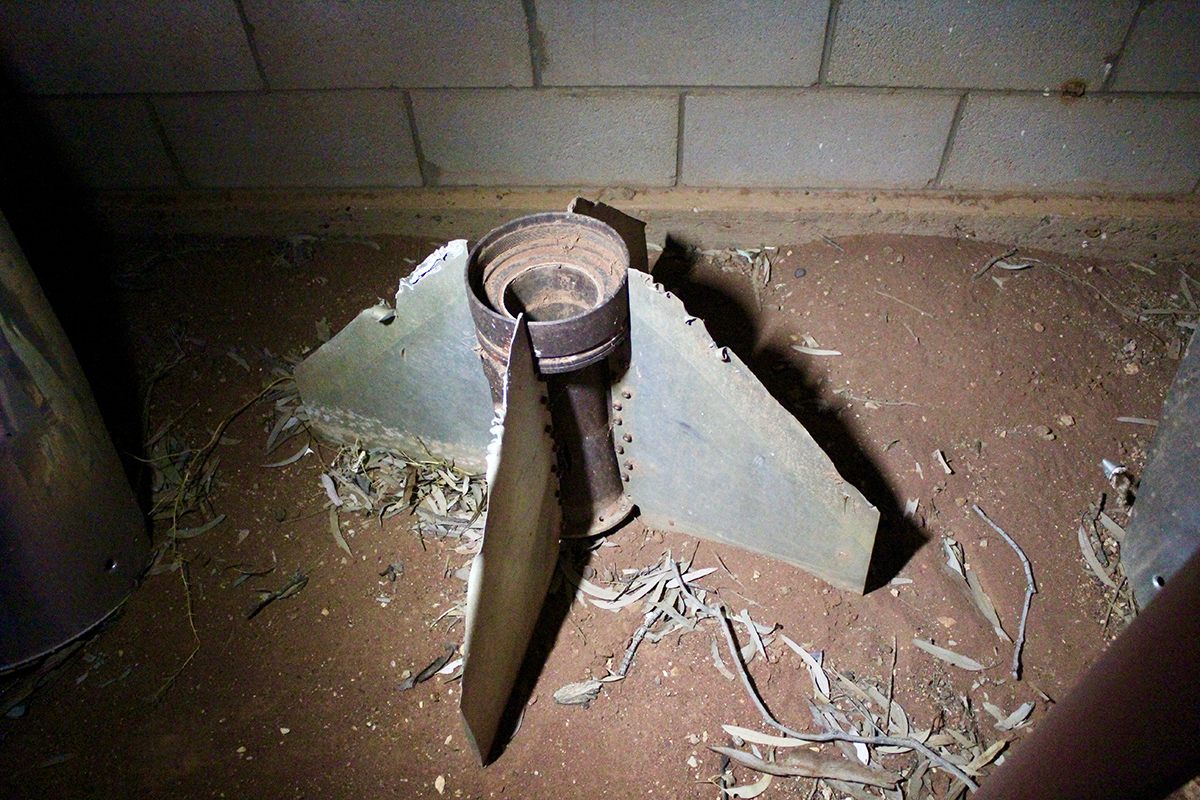
Atomic bombs, ballistic missiles and boosters for satellites have all been tested at the range since it opened in 1947, according to Wayne Reynolds, an associate professor of Australian military history. And it hasn’t been without controversy. Even though the government has officially declared the tests sites safe, some question whether the nuclear cleanup went far enough. There have also been accusations that not all indigenous Australians who lived in the area were notified when British atomic bombs were tested, according to an Australian Geographic article.
The range is still active today with the testing of drones, ground-based weapon systems and explosives, but it doesn’t provide the light show or rocket debris it once did. This year, the U.S. and Australian militaries successfully tested a hypersonic (extremely high speed) glider. Chinese buyers were also blocked from purchasing a large cattle station in the area due, in part, to national security fears.

“If they are letting off bombs, you will see a mushroom cloud come up south of us,” says Colin Greenfield, 45, who holds the lease for the 1.3 million-acre Billa Kalina cattle station. “It does happen in our backyard, it’s just that our backyard is very big.”
A few times a year, the Greenfields are evacuated for hours or days when a test takes place. There are also security checkpoints around the property that intensify during testing. “Because people have to get a permit to come to the area, it stops your average tourist or burglar who is up to no good,” says Greenfield. His bomb shelter also comes in handy as a storage unit.

Tests are generally planned to avoid peak pastoral and farming times such as mustering and sheep-shearing, according to an Australian Defence Force spokesperson. The Woomera range is divided into zones with the defense force having permanent access to what is known as the “red zone” and only accesses other zones when required.
Pastoralists are still finding bits and pieces of rockets, satellites, and weather balloon from those early tests, according to Trevor Wright. He owns a much celebrated pub in the six-person town of William Creek, a few miles outside of rocket range territory. Across the red dust road from the pub, the William Creek Hotel is a display of military and space junk found in the area.
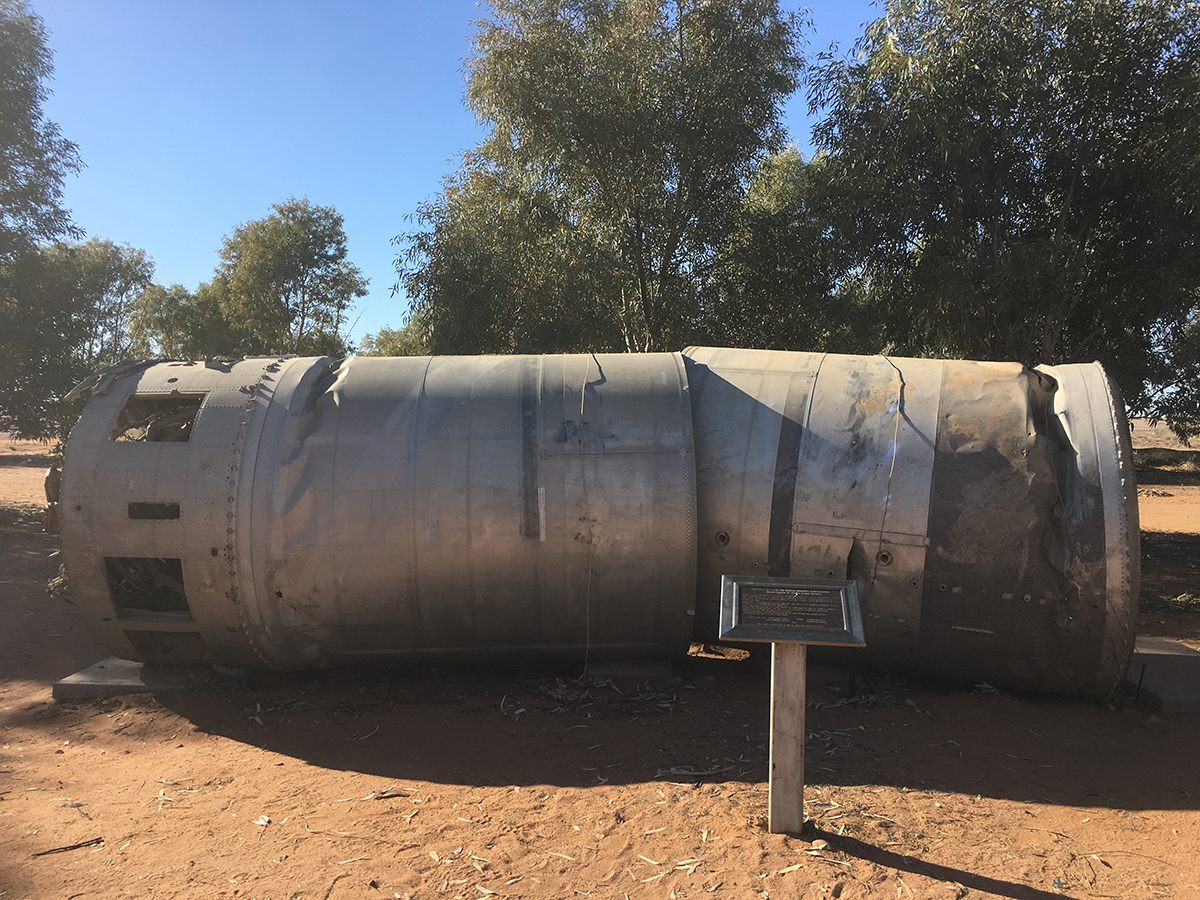
“These rockets would end up head first in dried up lakes like a cartoon,” said Wright. “The cattle stations would go out and collect them, so as a community we decided to put up a display of rocket memorabilia.”












Follow us on Twitter to get the latest on the world's hidden wonders.
Like us on Facebook to get the latest on the world's hidden wonders.
Follow us on Twitter Like us on Facebook